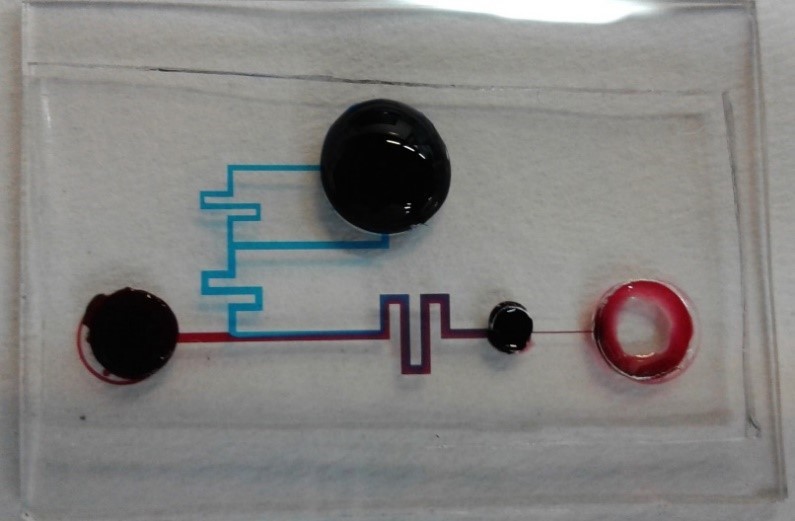Microfluidics and Infrared spectroscopy

Electrical properties measurement of bio-particles using microfluidic chips:
The goal of the project is to measure some of the electrical properties of biological particles such as sperm, ovum, organ inside the cell, and etc. The method we used for this purpose is impedance spectroscopy. The application of this project is biological properties examination and characterization. For future works, these extracted properties can be used to separate and sort particles. The electrodes used for electrical measurements on the chip have been implemented through metal deposition on glass. The body of channels is made of PDMS and it can have dimensions ranging from a few microns to several hundred microns.
Cryopreservation:
The goal of this project is to create a passive microfluidic chip for ease of cryopreservation. In this process, the embryos are exposed to liquid nitrogen (77 K) and then returned to normal room temperature. This process is inherently inducing thermal and osmotic shock to the embryos, which can cause death or genetic mutations. The microfluidic chip that we designed and developed for this project was able to achieve a great outcome. Tests using out device showed 100% rate of survival of the embryos and minimization of genetic mutations caused by osmotic shock.
Infrared spectroscopy
Characterization of human tissue and measurement of blood substances concentration: In this project, the optical properties of the tissue and blood is acquired using their absorption and transmission spectrum. By studying these properties, we can measure different components of the tissue and the blood. Applications of these measurements include glucometry and blood glucose measurements, blood fat measurements, blood oxygen levels, and etc.